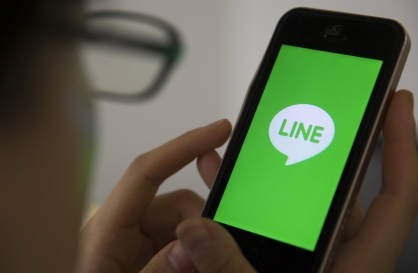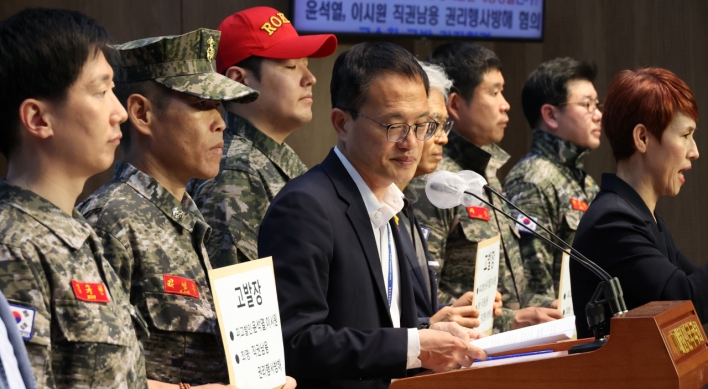Germany goes out of print as Manroland descends into insolvency
ByPublished : Nov. 28, 2011 - 18:35
Nov. 28 (Bloomberg) -- Germany, which invented the printing industry more than 500 years ago and dominates the market to this day, has lost its talent for making money from the presses.
Manroland AG, the biggest maker of newspaper printing machines, filed for insolvency on Nov. 25, threatening the jobs of more than 6,000 workers. Heidelberger Druckmaschinen AG, the world’s largest printing-press maker, has lost more than 500 million euros ($667 million) in the last three years. After thousands of job cuts and a botched merger attempt, the onset of a second credit squeeze has hastened their decline.
Manroland’s collapse highlights the threat to manufacturers as banks curtail financing of machinery that sells mainly to small and mid-sized customers. Manroland, whose machines typically cost more than $1 million, became the country’s largest corporate failure in two years, denting Germany’s resilience to the European debt crisis.
“Normally the next investment would be this year, but due to the crisis I am afraid to do it,” said Claude Vandevelde, who owns a business printing brochure, poster and packaging business in Kruishoutem, Belgium. “Going to the bank and asking for so much money is not so easy anymore.”
In the weeks before Manroland’s insolvency filing, the company negotiated with a potential investor, who then surprisingly withdrew, deputy chairman of the supervisory board Juergen Kerner said last week, without naming the suitor.
Allianz Investment
"All solutions failed because of a lack of financial support,” Kerner, who is a member of the IG Metall labor union, said. “Especially the owners MAN and Allianz were not prepared to provide more support.”
Allianz SE, Germany’s biggest insurer, is the largest shareholder in both Manroland and Heidelberger Druck. When it took a 65 percent stake in Manroland in 2006, Allianz valued the business at 856 million euros. Heavy-truck maker MAN, which owns about 35 percent of Manroland, and Allianz agreed to put up 275 million euros of equity to finance the deal 5 1/2 years ago.
Annual sales at 166-year-old Manroland have fallen by more than half since then to 942 million euros last year, pushing the company to an operating loss. The company has responded by cutting its workforce by almost a fifth and putting a third of its remaining employees on shorter working hours. Manroland only manufactures in Germany.
Out of Options
Heidelberger Druck has suffered a similar fate. Sales fell by a third in four years, and the company posted a net loss in the last three fiscal years. The Heidelberg-based company has shifted some operations to China, opening a plant in Shanghai in 2006 to tap growing Asian demand and cut production costs.
Allianz Capital Partners ran out of options to make money on the investment in Manroland. Plans for an initial public offering were dropped after markets failed to improve. In 2009, several months of negotiations over a merger with Heidelberger Druck ended without agreement.
Heidelberger Druck shares have lost most of their value since their peak on Aug. 2, 2000, at 45.66 euros and have been trading close to 1.50 euros since August. Koenig & Bauer AG, Germany’s second-largest printing press maker, has fallen 66 percent in that time. That compares with a 30 percent drop in the 92-member Prime Industrial Index of German stocks.
In contrast to printing, German machine-makers have withstood the debt crisis so far. Hans-Peter Keitel, president of Germany’s BDI industry federation, said last week a recession is unlikely as industrial companies are “robust” and their order books “well filled.” Machinery orders have returned to levels before the 2008 crisis, the VDMA trade group said.
No Recovery
“The printing industry didn’t recover in 2010 and 2011 like the other machine-building industries did,” said Markus Heering, head of the printing and paper industry VDMA group. “Their development was decoupled from the rest of the machine- building industry 1 1/2 years ago so you can’t draw parallels.”
Manroland filed for insolvency a day after German business confidence unexpectedly rose for the first time in five months in November. German unemployment remains near a two-decade low, supporting consumer spending and helping to offset the impact of waning demand for exports across the 17-nation euro region.
The printing industry has been in a state of shrinkage for years. Job cuts started in the last financial crisis, with Heidelberger announcing 500 reductions in July 2008, followed by a further 2,500 in October and then another 5,000 firings in March of the following year. Manroland laid off 1,000 people and closed a factory in Mainhausen in 2010.
Job Cuts
Manroland hasn’t been able to offer full-time work for all employees at plants in the German cities of Augsburg and Plauen since March 2009. A time limit on government-subsidized shorter hours will run out next March, curtailing the company’s options to keep its workers busy. Heidelberger Druck has about half of its German employees working fewer hours.
“The industry is shrinking structurally,” said Eggert Kuls, an analyst at Warburg Research in Hamburg, who has a “hold” rating on Heidelberger Druck. “Today you read your newspaper on your smart phone. Books are being downloaded. The volume of printed material is shrinking.”
A decade ago, life the printing-machine industry looked rosy. Heidelberger Druck’s stock price reached a peak a few months after its 150th anniversary and a trade fair where it tripled its orders from the previous expo five years earlier. Membership in Germany’s benchmark DAX Index appeared within reach after German utility RWE AG cut its stake in 2001.
That same year, Koenig & Bauer accelerated a move into niche markets such as money printing by acquiring Swiss partner De La Rue Giori SA. The purchase of tin printer Bauer & Kunzi followed in 2003. Such markets have helped the Wuerzburg-based company to remain profitable even as demand for sheet-fed and web-fed presses plummeted.
Digital Debacle
Manroland’s history dates back to 1844, some 400 years after Johannes Gutenberg invented movable type printing. The first commercial web-fed presses, used to print newspapers, were produced in Germany in 1879 and 80 years later three-quarters of all editions of German daily papers were printed on machines made in Augsburg at Manroland.
The industry struggled with the advent of digital technology. Heidelberger Druck aborted a five-year experiment in 2004 by selling its digital business to Eastman Kodak Co. after losses ballooned. Speed of change hasn’t much precedent in the printing industry. Gutenberg’s invention was used for centuries until Friedrich Gottlob Koenig developed the first flatbed cylinder printing press in 1810.
Business in Balance
Europe’s sovereign debt crisis has accelerated the decline. The region’s banks say they have to cut assets to help satisfy a government push to boost capital faster than planned. That may trigger a credit crunch for companies and consumers in the 17- nation euro zone, helping to push its economy into recession, Citigroup Inc. and Deutsche Bank AG analysts said last month.
Vandevelde, who manages his company with his two brothers, says squirreling money away helped him through bad years. He’ll need to make a decision on a new machine within 20 months, though this time around, he can’t be certain of pulling through.
“I survived because every time I had a good year, I left my money in the company and didn’t take it with me home,” he said. “I don’t know if it will survive another three years
<한글기사>
디지털시대.. 500년 독일인쇄역사 몰락한다
500여년 전에 인쇄산업을 고안해 오늘날까지 세계 시장을 지배해오던 독일 인쇄산업이 몰락하고 있다.
세계최대의 윤전기회사인 만로란트사는 지난 25일(현지시간) 파산을 신청했으며 6천명 이상의 직원이 실직 위기에 놓였다.
세계 최대의 인쇄용 프레스기 업체인 하이델베르거 드룩마쉬넨사도 사정은 비슷 하다.
이 회사는 지난 3년 동안 5억유로(6억6천700만달러) 이상의 손실을 냈다.
그동안 수천명을 감원하고 기업 합병 노력까지도 시도해봤지만 실패한 끝에 제2 차 금융 위기가 닥치면서 회사의 붕괴는 가속화됐다.
만로란트의 몰락은 중소규모 기업을 주요 고객으로 한 기계업체에 은행이 돈줄 을 조이면서 일어나는 위기 상황을 잘 보여주고 있다.
만로란트사의 윤전기는 제품 가격이 100만달러를 넘는 것이 보통이다.
이 회사의 파산은 지난 2년 동안 일어난 독일 기업 파산 중 최대 규모로, 유럽 재정 위기에도 회복력을 보여줬던 독일 경제에도 흠집을 남겼다.
만로란트의 최대 주주는 독일 최대 보험사인 알리안츠이다.
알리안츠는 하이델베르거 드룩사의 최대 주주이기도 하다.
대형트럭 업체인 만이 만로란트의 나머지 35% 지분을 소유하고 있다.
하지만 알리안츠가 최대 지분을 2006년 인수한 이후 166년 역사의 만로란트사는 연간 매출이 절반 이상 감소해 지난해에는 9억4천200만유로에 그쳤다.
이 회사는 20% 가까이 인력을 감축하고 나머지 인력의 3분의 1에 대해 근무시간 단축 조치를 내리는 등 자구조치를 취해야 했다.
하이델베르거 드룩의 매출도 지난 4년 동안 3분의 1이나 떨어졌다.
이 회사는 지난 3년 동안 내리 적자를 기록했다.
2006년에는 상하이에 공장을 짓는 등 일부 생산 시설을 중국으로 옮겨 아시아 시장 개척과 생산비 감축을 노리기도 했다.
그러나 시장 자체가 회복되지 않고 있다.
인쇄 및 인쇄용지 업체인 VDMA그룹의 마르쿠스 헤링 회장은 "인쇄산업이 지난 2 010년과 올해에 다른 기계류 업체와 달리 회복하지 못했다"고 말했다.
인쇄산업은 지난 수년간 계속 침체해 금융 위기가 일어난 2008년 7월에 하이델 베르거 드룩사는 500명 감원을 발표하고 이후 10월에 2천500명 추가 해고를 단행한 데 이어 다음해 3월에는 5천명을 또 해고했다.
만로란트는 1천명을 해고했으며 지난해에는 마인하우젠 공장을 폐쇄했다.
인쇄산업은 디지털 시대가 도래하면서 악전고투하고 있다.
하이델베르거 드룩은 5년의 실험 끝에 손실이 눈덩이처럼 커지자 지난 2004년 디지털 사업 부문을 이스트만 코닥에 매각했다.
최근의 유럽 재정위기사태는 은행들의 자금 공급을 줄이면서 이들의 몰락을 재촉하고 있다.










![[Weekender] How DDP emerged as an icon of Seoul](http://res.heraldm.com/phpwas/restmb_idxmake.php?idx=644&simg=/content/image/2024/04/25/20240425050915_0.jpg&u=)

![[Today’s K-pop] NewJeans' single teasers release amid intrigue](http://res.heraldm.com/phpwas/restmb_idxmake.php?idx=644&simg=/content/image/2024/04/26/20240426050575_0.jpg&u=)





![[Herald Interview] Mistakes turn into blessings in street performance, director says](http://res.heraldm.com/phpwas/restmb_idxmake.php?idx=652&simg=/content/image/2024/04/28/20240428050150_0.jpg&u=)
